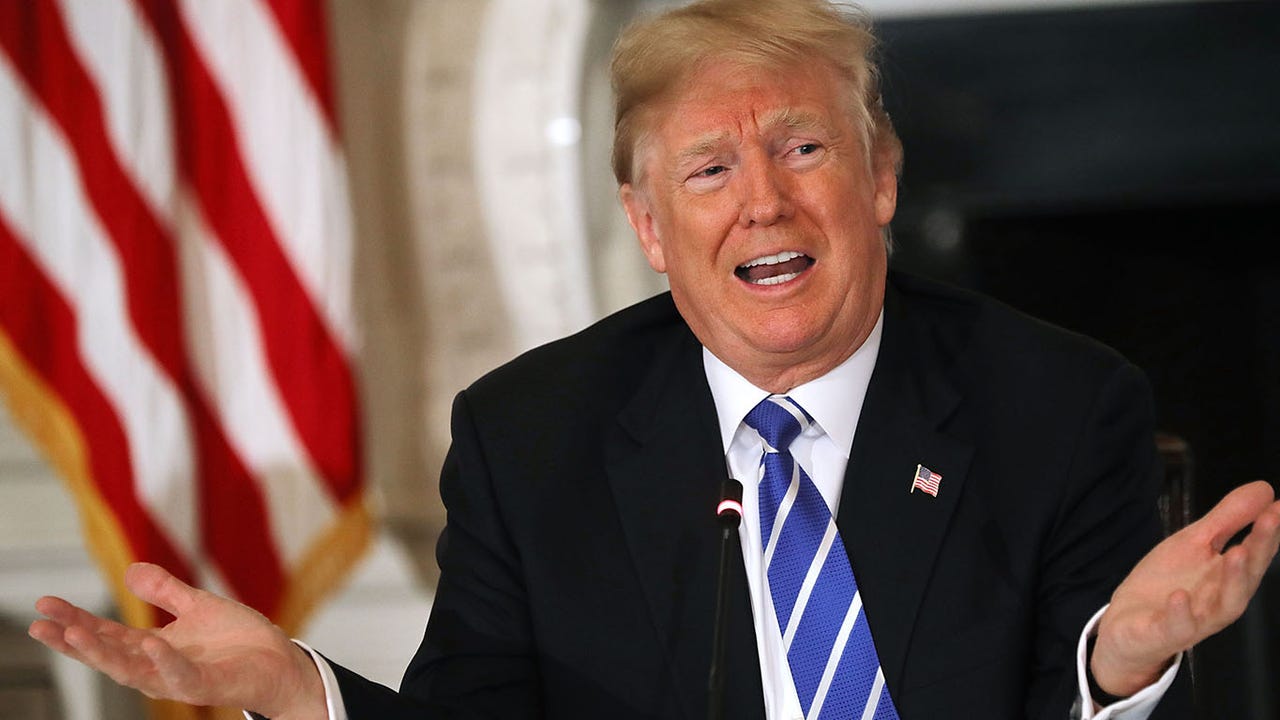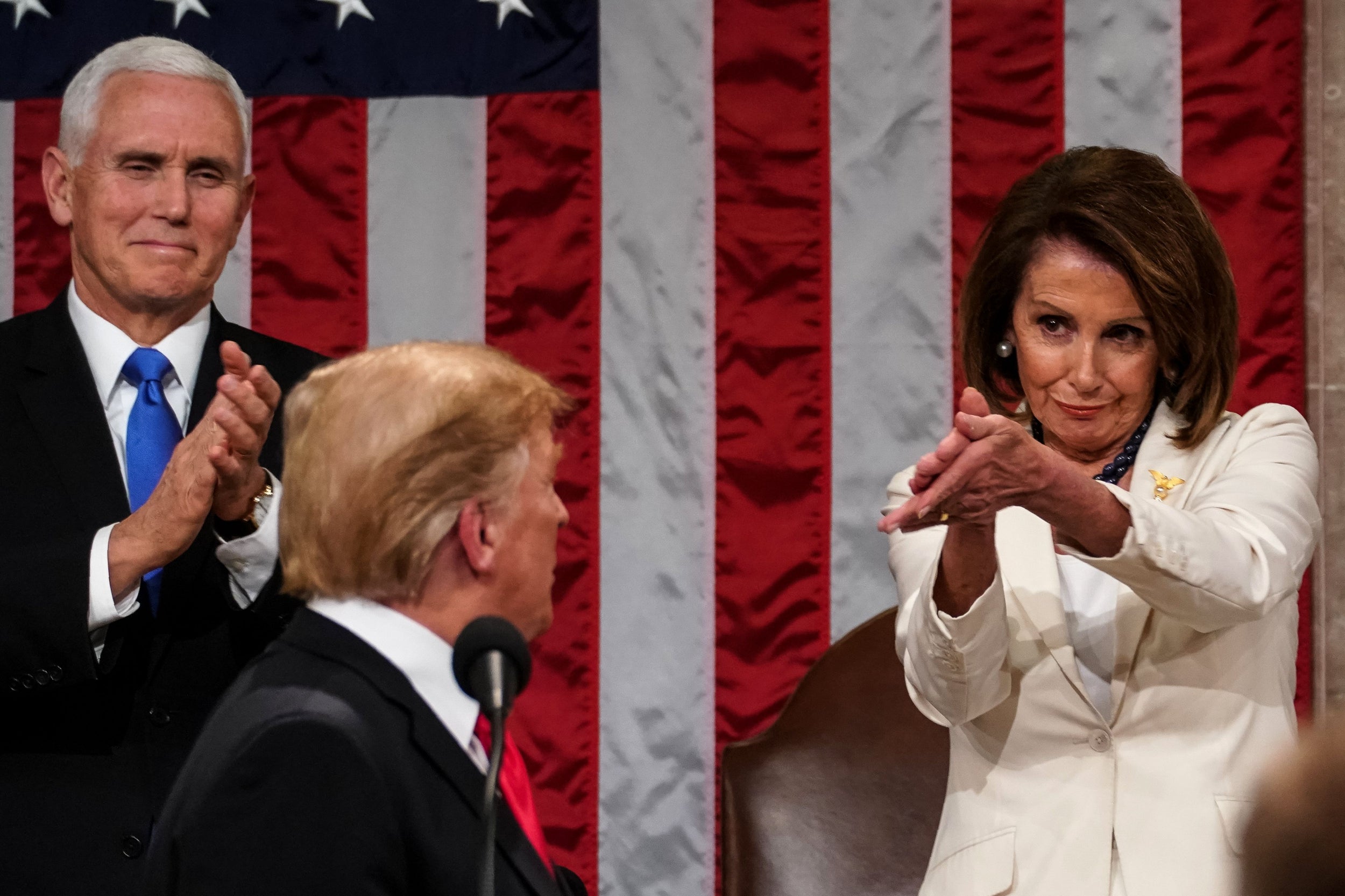https://www.rt.com/business/451325-debt-record-22-trillion/
History made: US national debt tops $22 trillion
Published time: 13 Feb, 2019 00:38Edited time: 13 Feb, 2019 00:38

© Global Look Press/Nikolay Gyngazov
On Tuesday, the US Treasury Department published the daily statement showing outstanding public debt standing at $22.01 trillion. The sum total of government budget deficits has increased by $2.06 trillion since President Donald Trump took office in January 2017.

National Debt Tweets
✔@NationalDebt
https://twitter.com/NationalDebt/status/1095431279816790016
$22,012,840,891,685.32 (+) #NationalDebt
362
5:15 AM - Feb 13, 2019
Twitter Ads info and privacy
478 people are talking about this
The Congressional Budget Office (CBO) is projecting the deficit for fiscal year 2019 to be $897 billion, a 15 percent increase over last year’s $779 billion – and greater than the entire Pentagon budget, for comparison’s sake. The CBO has estimated the deficit will continue to increase by $1 trillion annually starting in 2022, due to the rising cost of entitlement programs like Social Security and Medicare.
The deficit nearly doubled during the administration of President Barack Obama, growing by $9.3 trillion as the Federal Reserve engaged in massive “quantitative easing” programs to bail out the financial sector from the crash of 2008.

zerohedge@zerohedge
https://twitter.com/zerohedge/status/1095445516001988608
US National Debt Tops $22 Trillion https://www.zerohedge.com/news/2019-02-12/us-national-debt-tops-22-trillion …
222
6:12 AM - Feb 13, 2019
Twitter Ads info and privacy

US National Debt Tops $22 Trillion
Total US debt has now risen by over $2 trillion since Trump took office... but notably slower than Obama's pace of borrowing...
zerohedge.com
223 people are talking about this
The new debt record “is another sad reminder of the inexcusable tab our nation’s leaders continue to run up and will leave for the next generation,” according to Judd Gregg and Edward Rendell, co-chairmen of the Campaign to Fix the Debt, a project of the nonpartisan Committee for a Responsible Federal Budget.
One expert has pointed out that just the current unfunded liabilities amount to over 500 percent of last year’s gross domestic product, and paying them down would require 10 percent of the GDP for more than five decades, which is unlikely to actually happen at best.

Jeffrey Gundlach
✔@TruthGundlach
https://twitter.com/TruthGundlach/status/1089693631689121792
Currently $122 Trillion US unfunded liabilities per Debtclock. That’s 564% of Fiscal ‘18 GDP. To fund would require 10% of GDP for 56+ yrs.
1,683
9:16 AM - Jan 28, 2019
Twitter Ads info and privacy
858 people are talking about this
More bad news came from the Federal Reserve Bank of New York, which published the US household debt and credit report on Tuesday showing the private debt of Americans reached the record $13.5 trillion at the end of 2018.
Though mortgage debt has gone down for the first time in two years, credit card borrowing matched the $870 billion mark it had reached prior to the 2008 crisis.
ALSO ON RT.COMAs US debt spirals to $22 trillion, former Fed chair Janet Yellen is suddenly concerned
For more stories on economy & finance visit RT's business section
Reporting what the mainstream media won’t: Follow RT’s Twitter account
FROM OUR PARTNERS
CNN's Nina Turner To Democratic Congresswoman: Stop Blaming Trump For All Racism
Bill Gates: 'Extreme' Politicians Pushing For 70% Tax Rate Are 'Missing The Picture'
Michelle Obama’s Grammy Appearance Splits Audiences: ‘I Will Never Watch’ Again
Subscribe to RT newsletter to get stories the mainstream media won’t tell you
Subscribe
العربيةESPРУСDEFR
ИНОТВRТДRUPTLY
RT News App

© Autonomous Nonprofit Organization “TV-Novosti”, 2005–2019. All rights reserved.
History made: US national debt tops $22 trillion
Published time: 13 Feb, 2019 00:38Edited time: 13 Feb, 2019 00:38

© Global Look Press/Nikolay Gyngazov
- 3311
- 8
On Tuesday, the US Treasury Department published the daily statement showing outstanding public debt standing at $22.01 trillion. The sum total of government budget deficits has increased by $2.06 trillion since President Donald Trump took office in January 2017.

National Debt Tweets
✔@NationalDebt
https://twitter.com/NationalDebt/status/1095431279816790016
$22,012,840,891,685.32 (+) #NationalDebt
362
5:15 AM - Feb 13, 2019
Twitter Ads info and privacy
478 people are talking about this
The Congressional Budget Office (CBO) is projecting the deficit for fiscal year 2019 to be $897 billion, a 15 percent increase over last year’s $779 billion – and greater than the entire Pentagon budget, for comparison’s sake. The CBO has estimated the deficit will continue to increase by $1 trillion annually starting in 2022, due to the rising cost of entitlement programs like Social Security and Medicare.
The deficit nearly doubled during the administration of President Barack Obama, growing by $9.3 trillion as the Federal Reserve engaged in massive “quantitative easing” programs to bail out the financial sector from the crash of 2008.

zerohedge@zerohedge
https://twitter.com/zerohedge/status/1095445516001988608
US National Debt Tops $22 Trillion https://www.zerohedge.com/news/2019-02-12/us-national-debt-tops-22-trillion …
222
6:12 AM - Feb 13, 2019
Twitter Ads info and privacy

US National Debt Tops $22 Trillion
Total US debt has now risen by over $2 trillion since Trump took office... but notably slower than Obama's pace of borrowing...
zerohedge.com
223 people are talking about this
The new debt record “is another sad reminder of the inexcusable tab our nation’s leaders continue to run up and will leave for the next generation,” according to Judd Gregg and Edward Rendell, co-chairmen of the Campaign to Fix the Debt, a project of the nonpartisan Committee for a Responsible Federal Budget.
One expert has pointed out that just the current unfunded liabilities amount to over 500 percent of last year’s gross domestic product, and paying them down would require 10 percent of the GDP for more than five decades, which is unlikely to actually happen at best.

Jeffrey Gundlach
✔@TruthGundlach
https://twitter.com/TruthGundlach/status/1089693631689121792
Currently $122 Trillion US unfunded liabilities per Debtclock. That’s 564% of Fiscal ‘18 GDP. To fund would require 10% of GDP for 56+ yrs.
1,683
9:16 AM - Jan 28, 2019
Twitter Ads info and privacy
858 people are talking about this
More bad news came from the Federal Reserve Bank of New York, which published the US household debt and credit report on Tuesday showing the private debt of Americans reached the record $13.5 trillion at the end of 2018.
Though mortgage debt has gone down for the first time in two years, credit card borrowing matched the $870 billion mark it had reached prior to the 2008 crisis.
ALSO ON RT.COMAs US debt spirals to $22 trillion, former Fed chair Janet Yellen is suddenly concerned
For more stories on economy & finance visit RT's business section
- 3311
- 8
Reporting what the mainstream media won’t: Follow RT’s Twitter account
FROM OUR PARTNERS
CNN's Nina Turner To Democratic Congresswoman: Stop Blaming Trump For All Racism
Bill Gates: 'Extreme' Politicians Pushing For 70% Tax Rate Are 'Missing The Picture'
Michelle Obama’s Grammy Appearance Splits Audiences: ‘I Will Never Watch’ Again
-

Russia-China real gold standard means end of US dollar dominance -

Putin warns of financial crisis the world ‘has not yet seen’
Subscribe to RT newsletter to get stories the mainstream media won’t tell you
Subscribe
Trump & Bolton's slam of Iran revolution highlights 40 years of US ‘regime change’ failure
A bridge too far: US claims Venezuela blocked aid deliveries... at a crossing that was never open
'Enormous hypocrisy': Hungary blasts US' warnings on the dangers of dealing with Russia or China
Trump orders US agencies to turbocharge AI research and ensure American dominance
China on gold-buying spree amid global push to end US dollar dominance
Mars One dreams plummet back to Earth as company goes bankrupt
Ukraine's new Neptune cruise missile is far from being God of Sea
Bigotry & xenophobia about ‘the Russians’ is the only kind PC culture allows
العربيةESPРУСDEFR
ИНОТВRТДRUPTLY
RT News App
- Live
- Applications
- Where to watch
- Schedule
- Sponsored content
- On-Air Talent
- Terms of Use
- Privacy policy
- About us
- Contact info
- Feedback
- Vacancies

© Autonomous Nonprofit Organization “TV-Novosti”, 2005–2019. All rights reserved.









